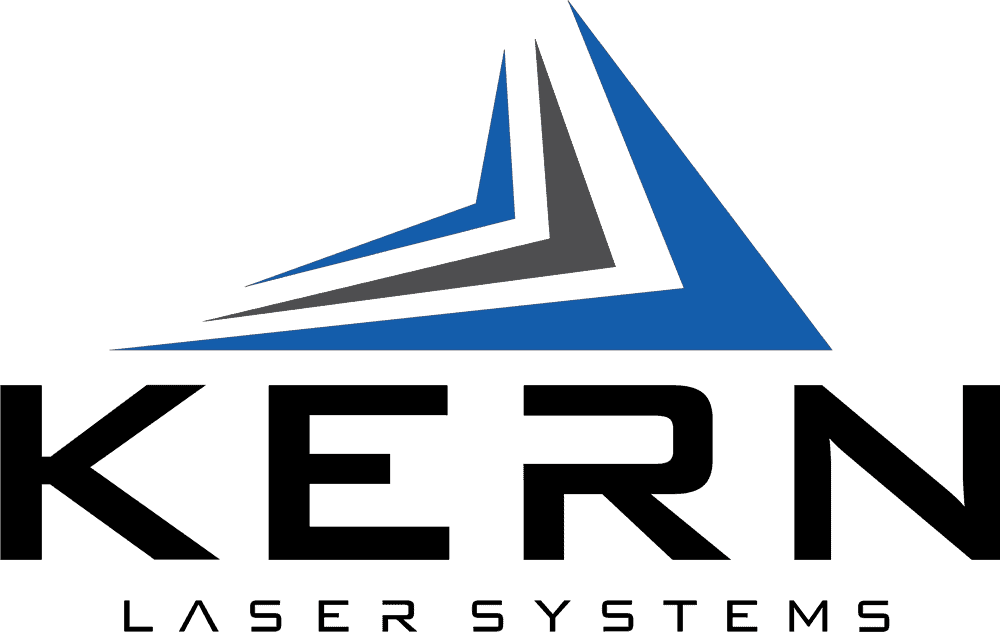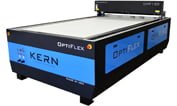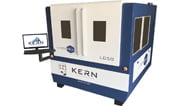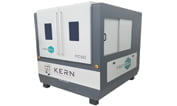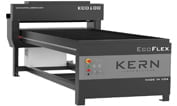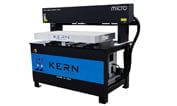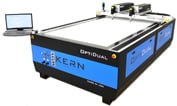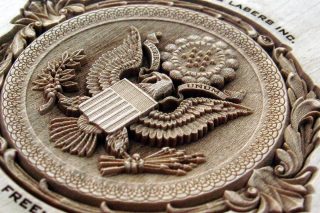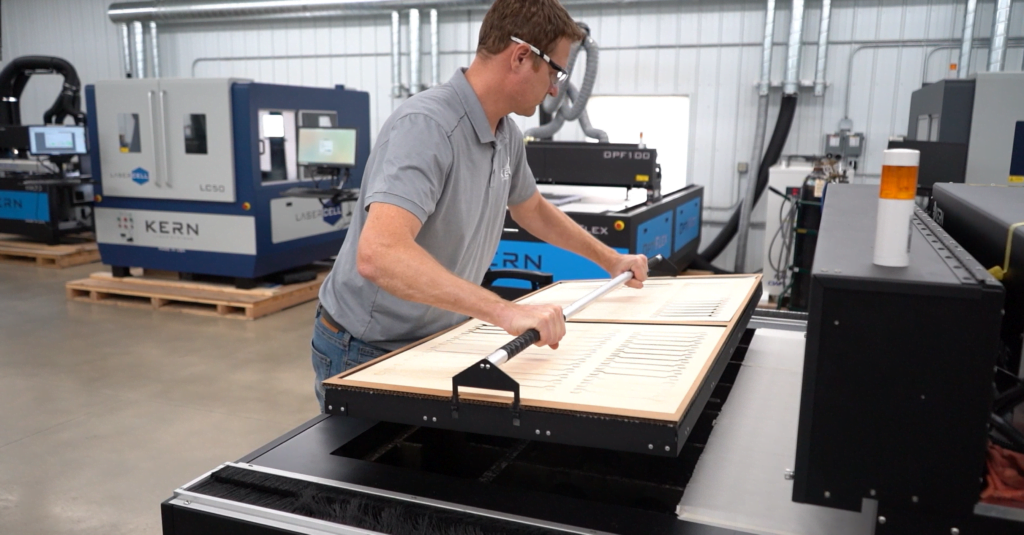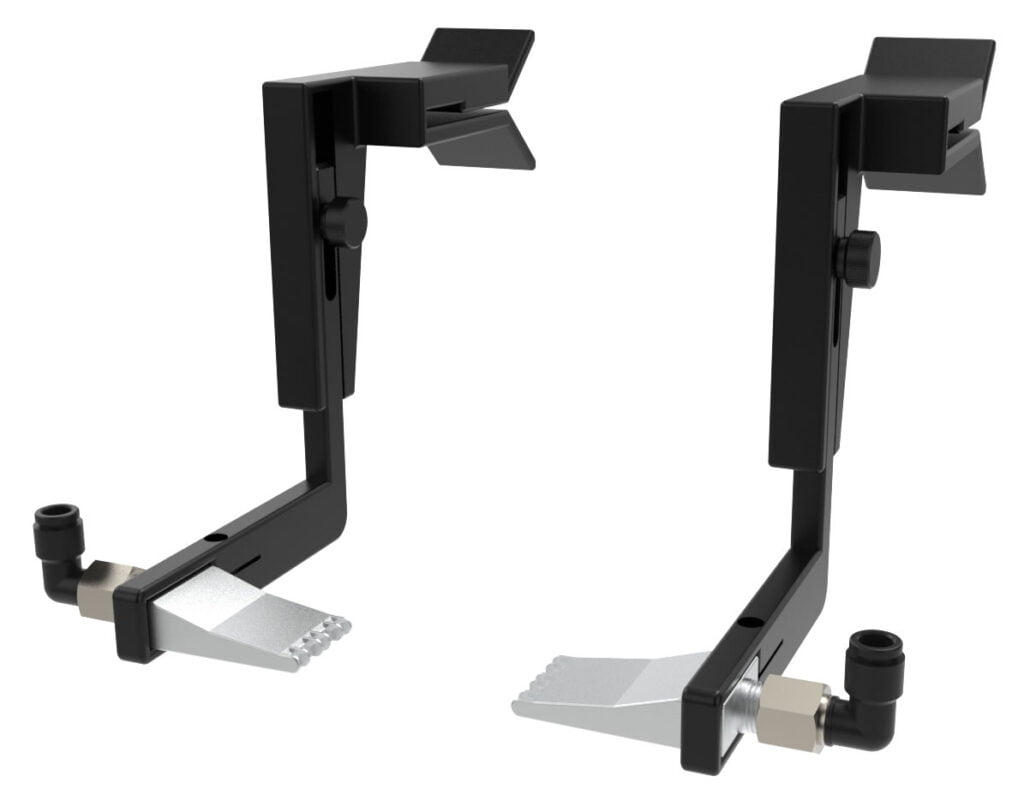Reducing Back Splatter / Reflection
Many of you have likely experienced the disheartening feeling of opening up a lens assembly and finding pits or a complete rupture of your focusing lens. These special optics can be an expensive maintenance item, especially when processing materials that tend to generate high levels of back splatter.
SPLATTER 101
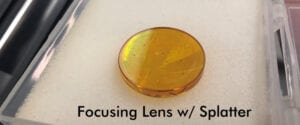 Splatter refers to small particles of metal that are released when laser cutting metal. Most of these small particles fall through the cut kerf and into the table chamber. However, small amounts of splatter can still find their way into the beam path. Eliminating splatter is not possible, but the following tips will help to reduce the amount of splatter or eliminate its ability to enter the beam path.
Splatter refers to small particles of metal that are released when laser cutting metal. Most of these small particles fall through the cut kerf and into the table chamber. However, small amounts of splatter can still find their way into the beam path. Eliminating splatter is not possible, but the following tips will help to reduce the amount of splatter or eliminate its ability to enter the beam path.
PROPER PIERCE
Customers are always looking to optimize their settings to achieve the fastest cut or best quality edge. They tend to ignore optimizing for proper pierce settings. However, the vast majority of splatter is generated during the piercing process. In general, the thicker the metal, the more splatter generated, the more likely the lens is affected. The best practice is to pierce with the smallest nozzle hole possible to reduce the amount of splatter generated. When piercing reflective metals such as aluminum, brass and copper a high power and moderate assist gas pressure, results in a nice small pierce point. When cutting thick mild steel, the ideal pierce is generally achieved with a lower power, lower assist pressure, along with a longer pierce dwell. For example, when processing 4.5mm mild steel on our 400W CO2 laser, we generally use a 3 second pierce, 35% power and 40 PSI oxygen.
INVEST IN A COVER LENS
A cover lens is a protective barrier that is specially designed to fit between the nozzle and focusing lens. Kern refers to their covers lens as the K-Lens for CO2 laser systems and F-Lens for the FiberCELL. These sacrificial lenses are considered a consumable. However, they are priced economically on the LaserLocker.com website.
Starting in 2017, all of Kern’s V-FOCUS metal cutting optic assemblies include a K-Lens. The K-Lens are accessed by unscrewing the lens holder from the ceramic isolator. This allow for easy replacement without having to remove the focusing lens. The V-FOCUS metal cutting assemblies are compatible with and laser system that uses the 1” round optic tube. We suggest customers prior to 2017 invest in a new V-FOCUS assembly, especially if you find yourself replacing focusing lenses often.
The FiberCELL machines are equipped with a LaserMech FiberMini beam delivery. This delivery has a very convenient cover lens drawer that can be accessed without removing any components. This allows operators to check the F-Lens often and replace as needed.
NOZZLE SELECTION
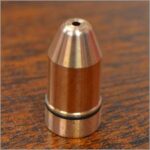 A variety of nozzles are available for Kern’s laser systems. The standard nozzle on our CO2 metal cutting assemblies have a 1.5mm diameter opening. If you find yourself replacing your optics more frequent that you like, try switching to a 1mm nozzle. The beam alignment through this smaller nozzle becomes more critical and will need to be re-calibrated. However, the smaller opening drastically reduces that amount of splatter reaching the optic.
A variety of nozzles are available for Kern’s laser systems. The standard nozzle on our CO2 metal cutting assemblies have a 1.5mm diameter opening. If you find yourself replacing your optics more frequent that you like, try switching to a 1mm nozzle. The beam alignment through this smaller nozzle becomes more critical and will need to be re-calibrated. However, the smaller opening drastically reduces that amount of splatter reaching the optic.
The FiberCELL system is equipped standard with a “double-nozzle”. Double nozzles are essentially a nozzle within a nozzle. As the cutting gas enters the first nozzle, cross airflow is created. This cross flow creates a barrier, which greatly reduces the return of splatter, prolonging optic life.
GAP DISTANCE
This aspect is pretty basic. A larger gap between the nozzle and material being cut reduces the amount of splatter that successfully makes its way back into the nozzle. A general rule of thumb in the laser industry is to set your gap at the same thickness as the material being cut. The theory being the thicker the material, the more splatter, the larger the gap you need. I have found this tip to drastically reduce pitting on the cover lens especially when piercing thicker materials that tend to splatter.
The FiberCELL FiberMini AF (Auto Focus) is capable of adjusting the focus point of the laser beam automatically in the KCAM software. This is a super powerful feature to reduce back platter during pierce. To setup this properly, set the gap distance to a very large amount like 7mm. Then drop your focus down in the KCAM software so that the pierce point is at the top of the metal. This setup results in a quick pierce through the metal and a drastic reduction of splatter as the nozzle is far away from the metal being processed.
The CO2 V-Focus assembly also has a variable knob which allows adjustment of the focus point when changing gap distances. On older CO2 machines with fixed optic assemblies the lens would need to be physically adjusted when a gap change is made. I recommend our CO2 customers invests in the new V-FOCUS lens assembly, it will save you a lot of time and reduce maintenance costs.
NON-METALS
When piercing plastic, wood, foam and other non-metals, splatter is not generally an issue. However, smoke and residue are created during the piercing and cutting process. The vacuum system will remove a majority of the smoke and residue, although some lingering traces may collect on the focusing optics. To help combat smoke and residue from getting into the nozzle, a knife air should be used. The knife air is installed on Kern’s laser shroud and injects compressed air perpendicular to the cut, pushing the smoke and residue away from the nozzle opening.
FINAL THOUGHTS
Again, the vast majority of splatter is generated during the piercing process. Operators should start by optimizing their pierce settings/gap and installing a cover lens. These two items alone will save you a great deal of time and money!
